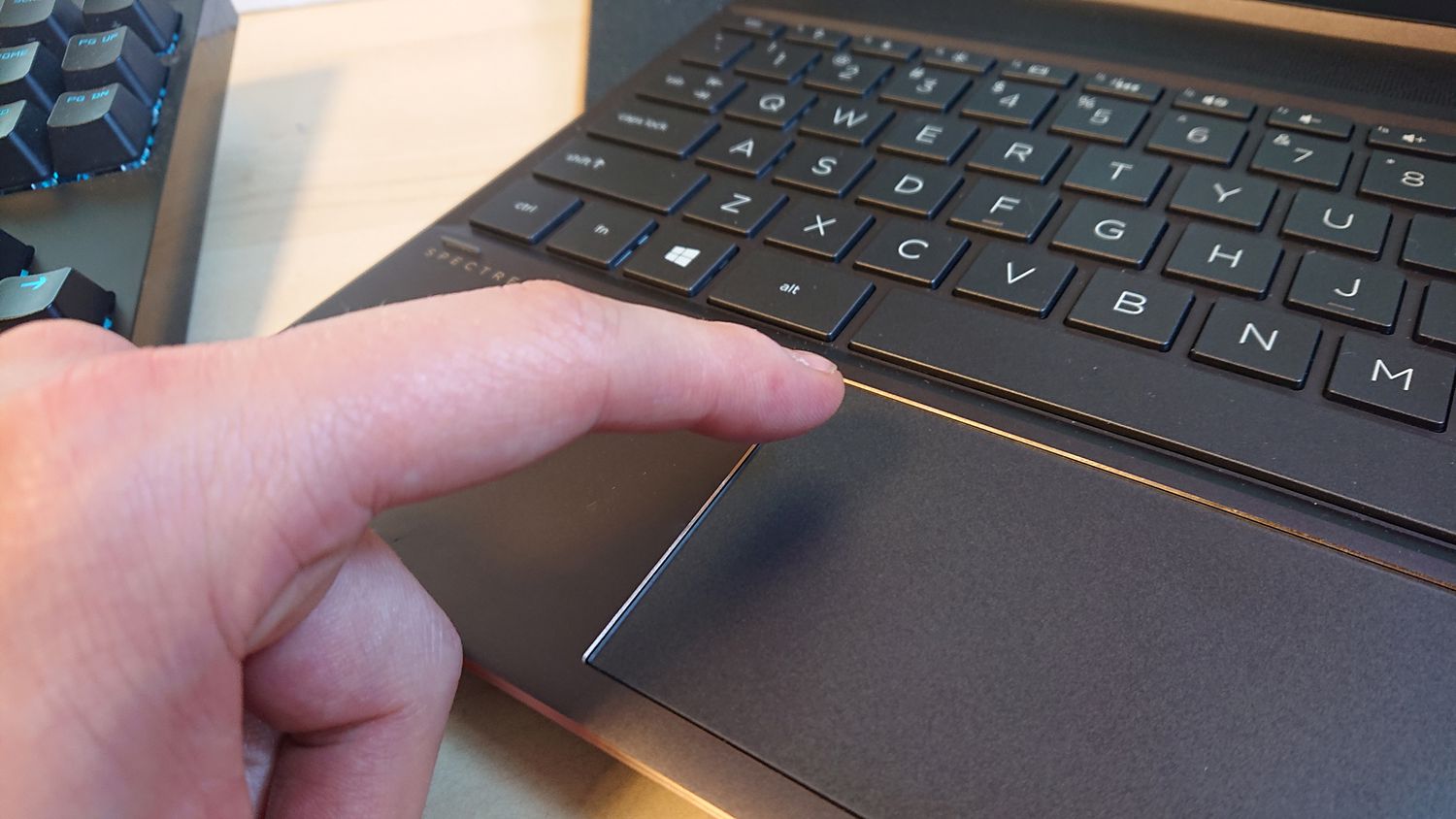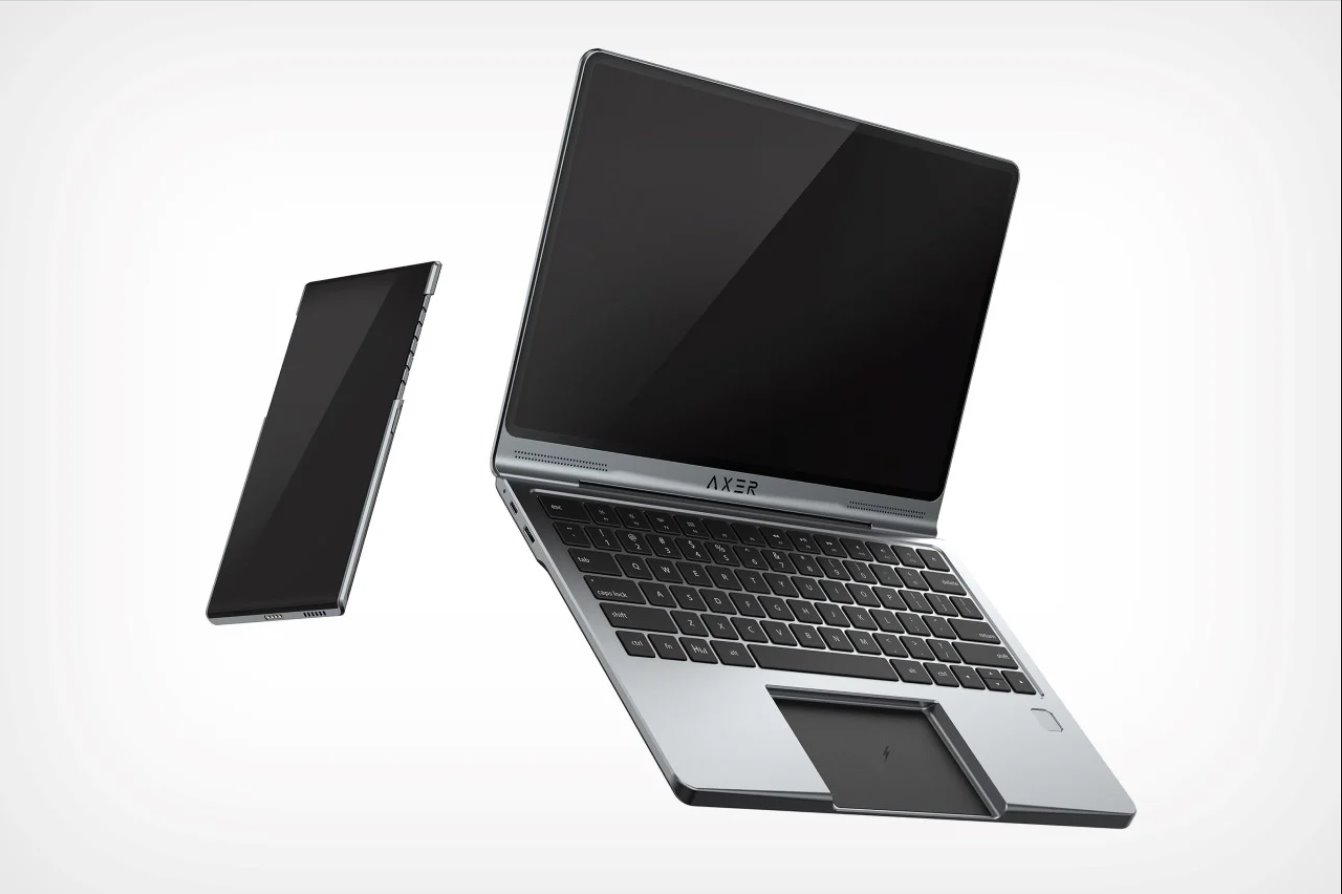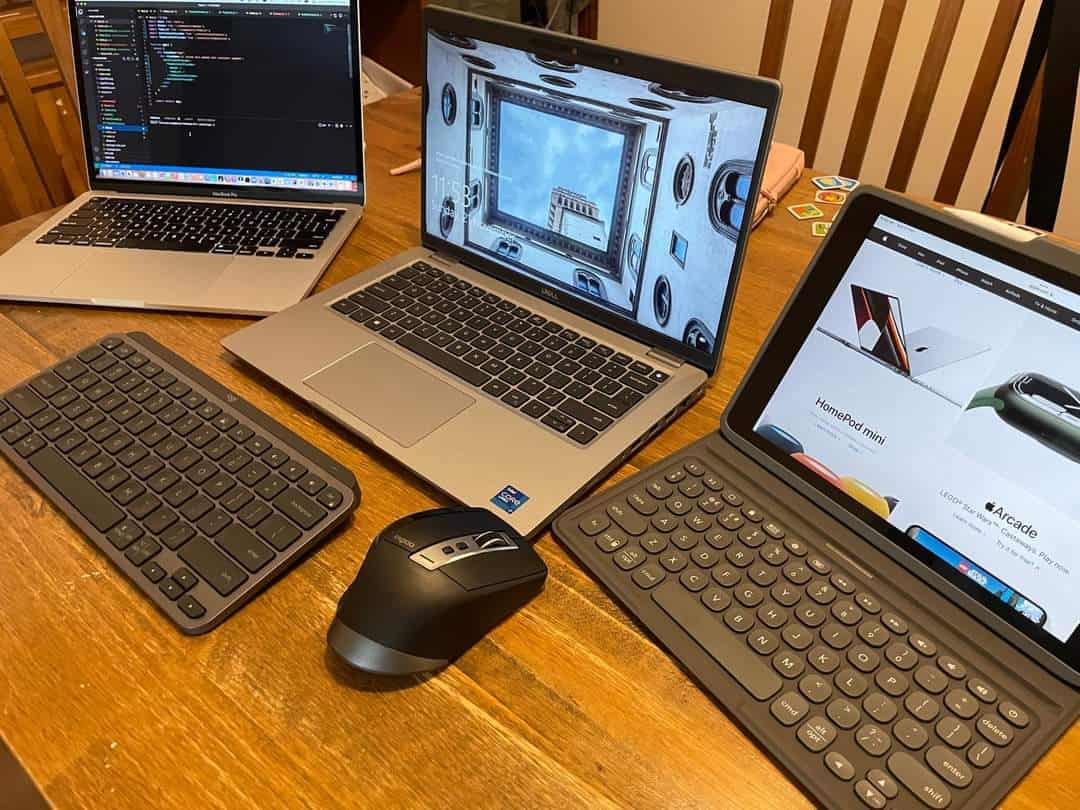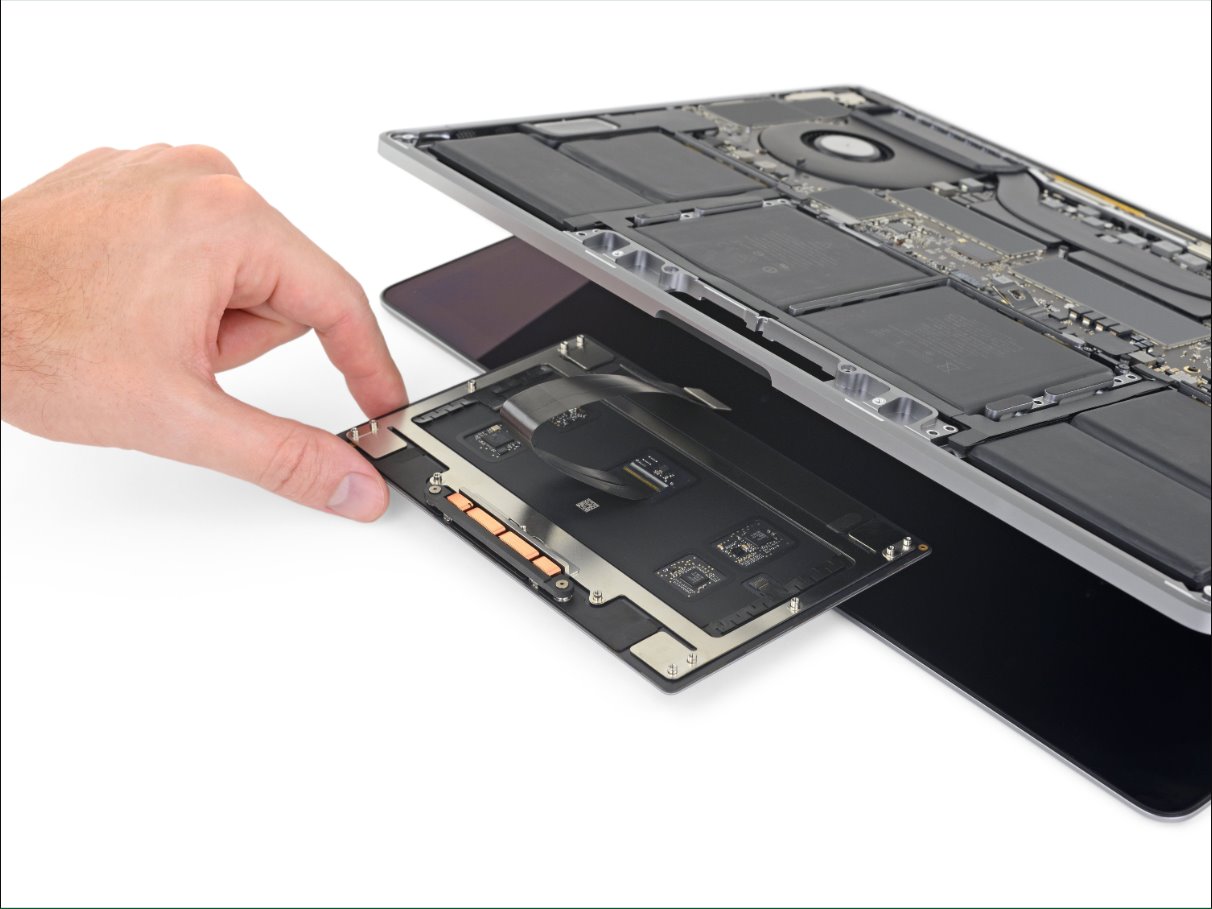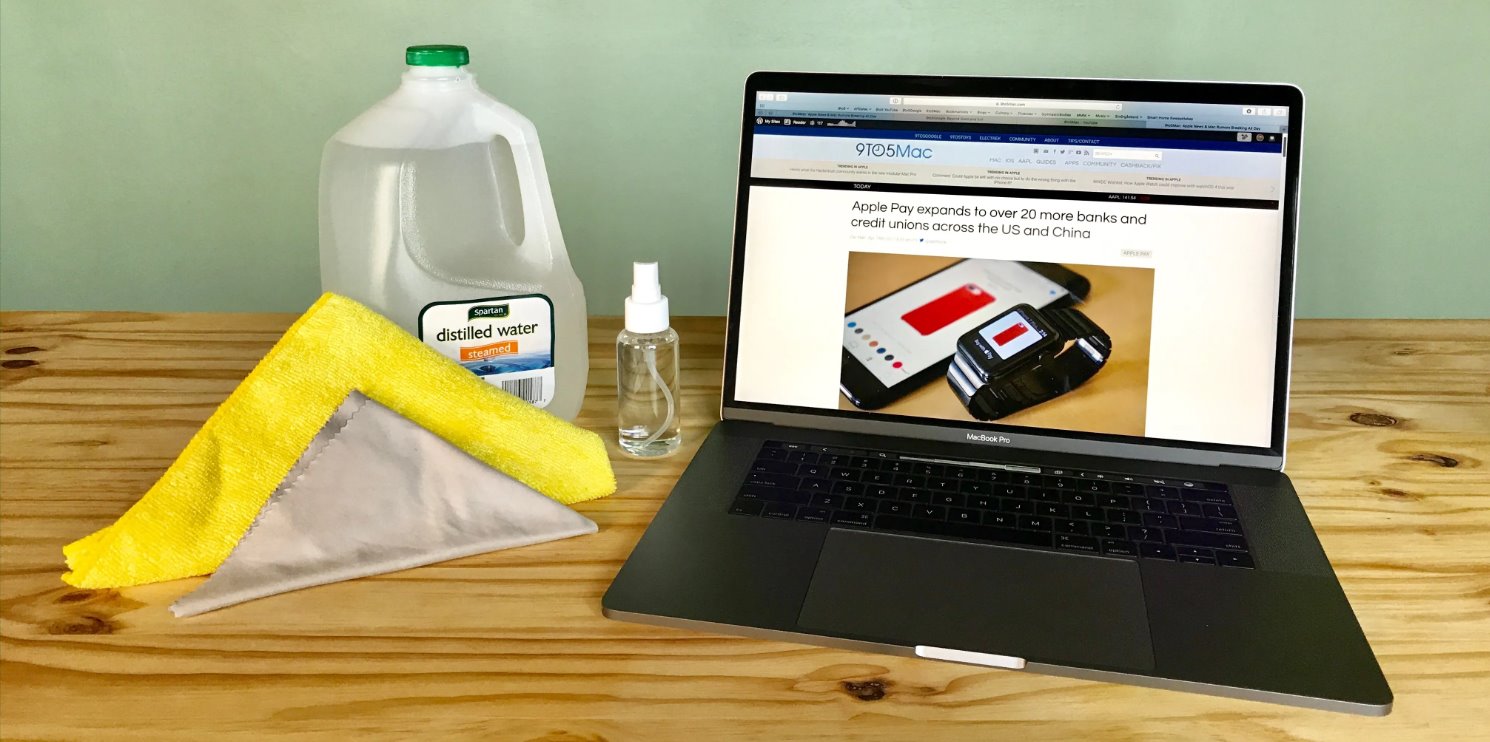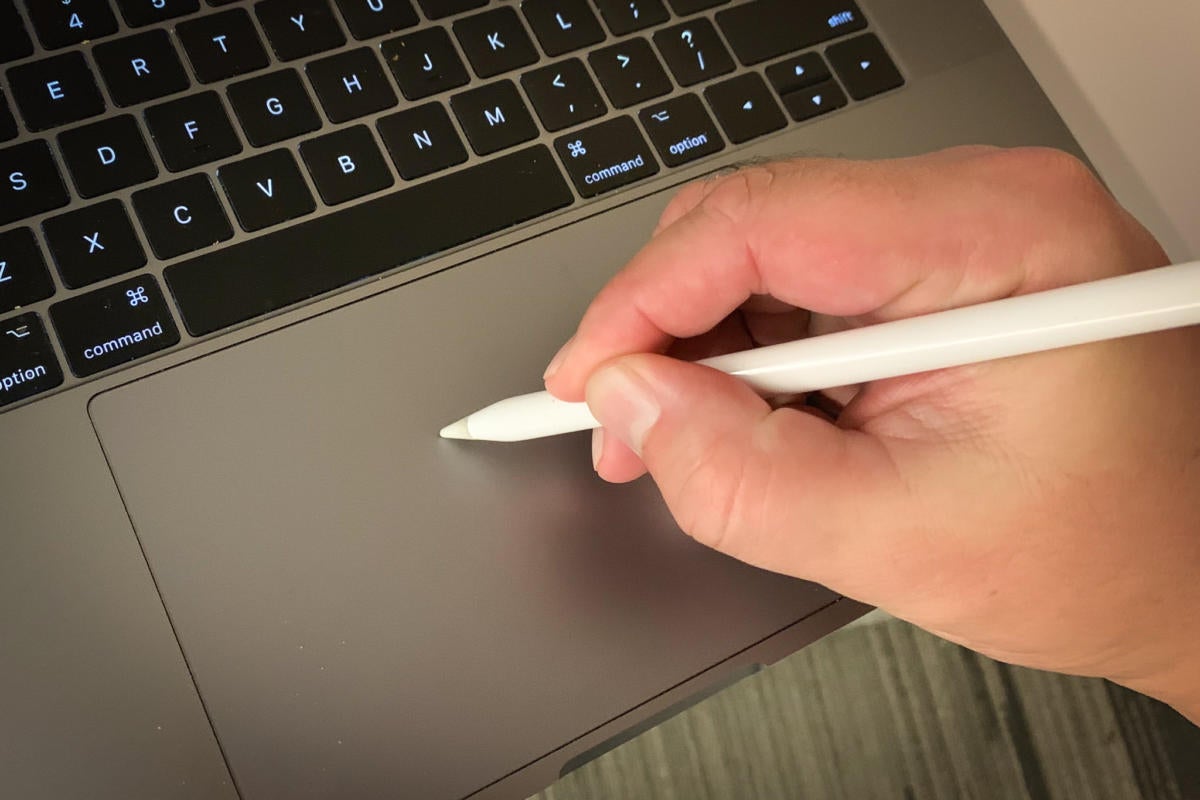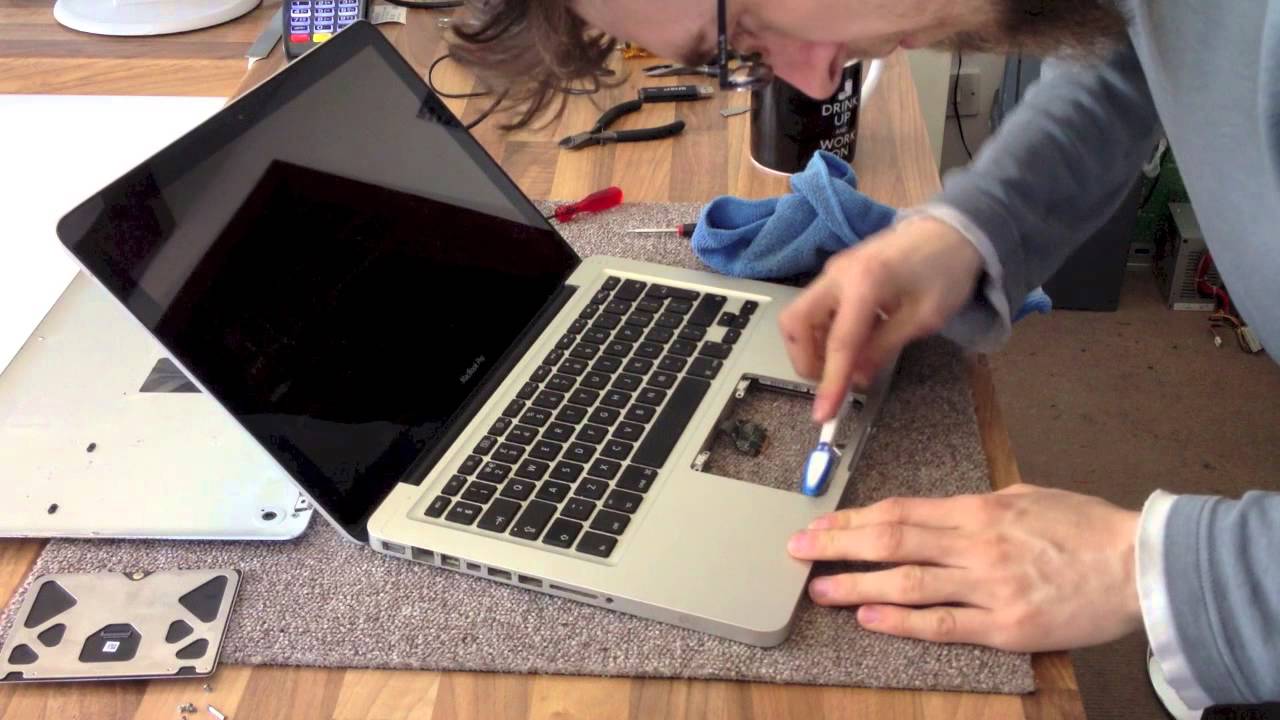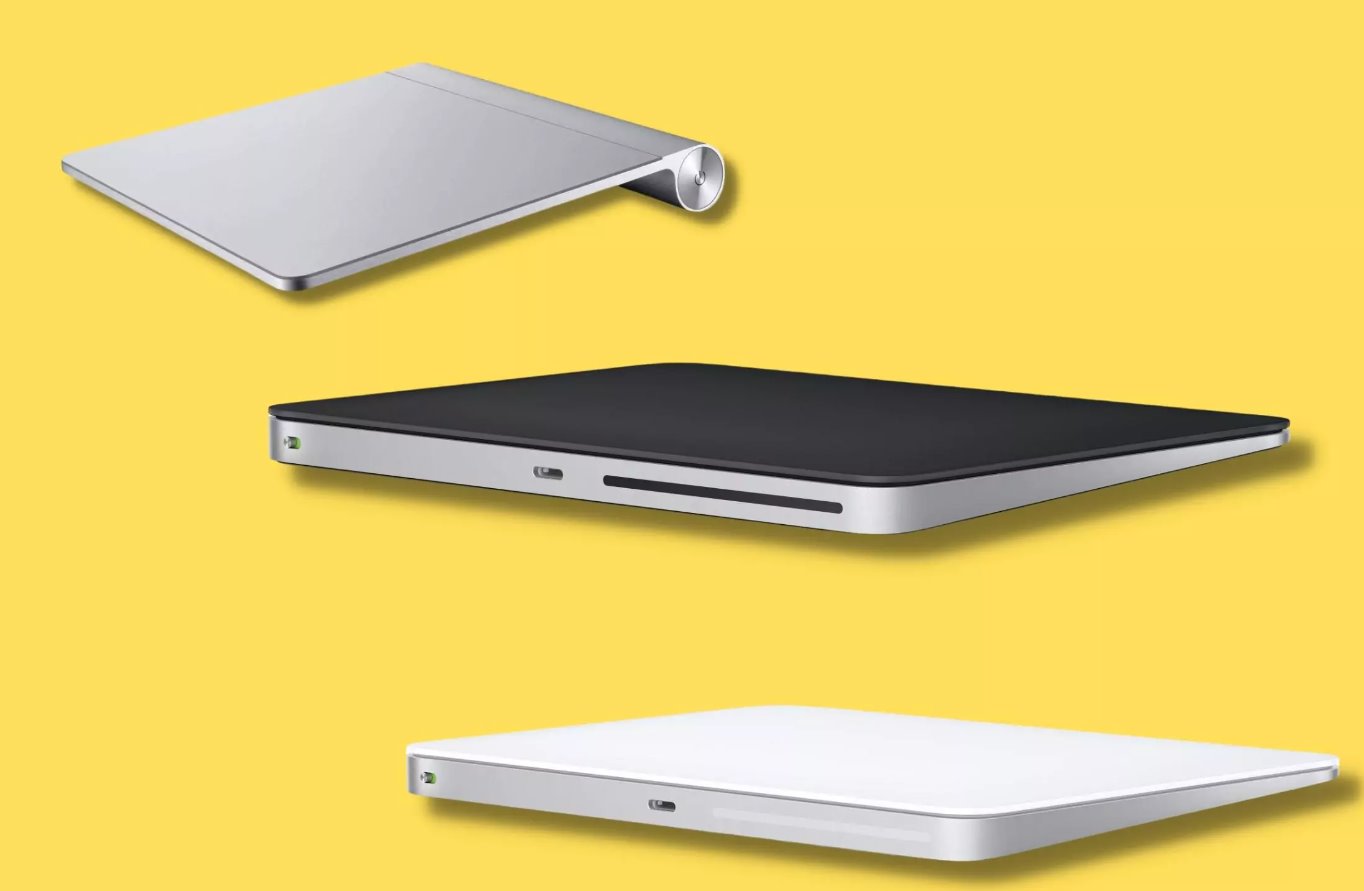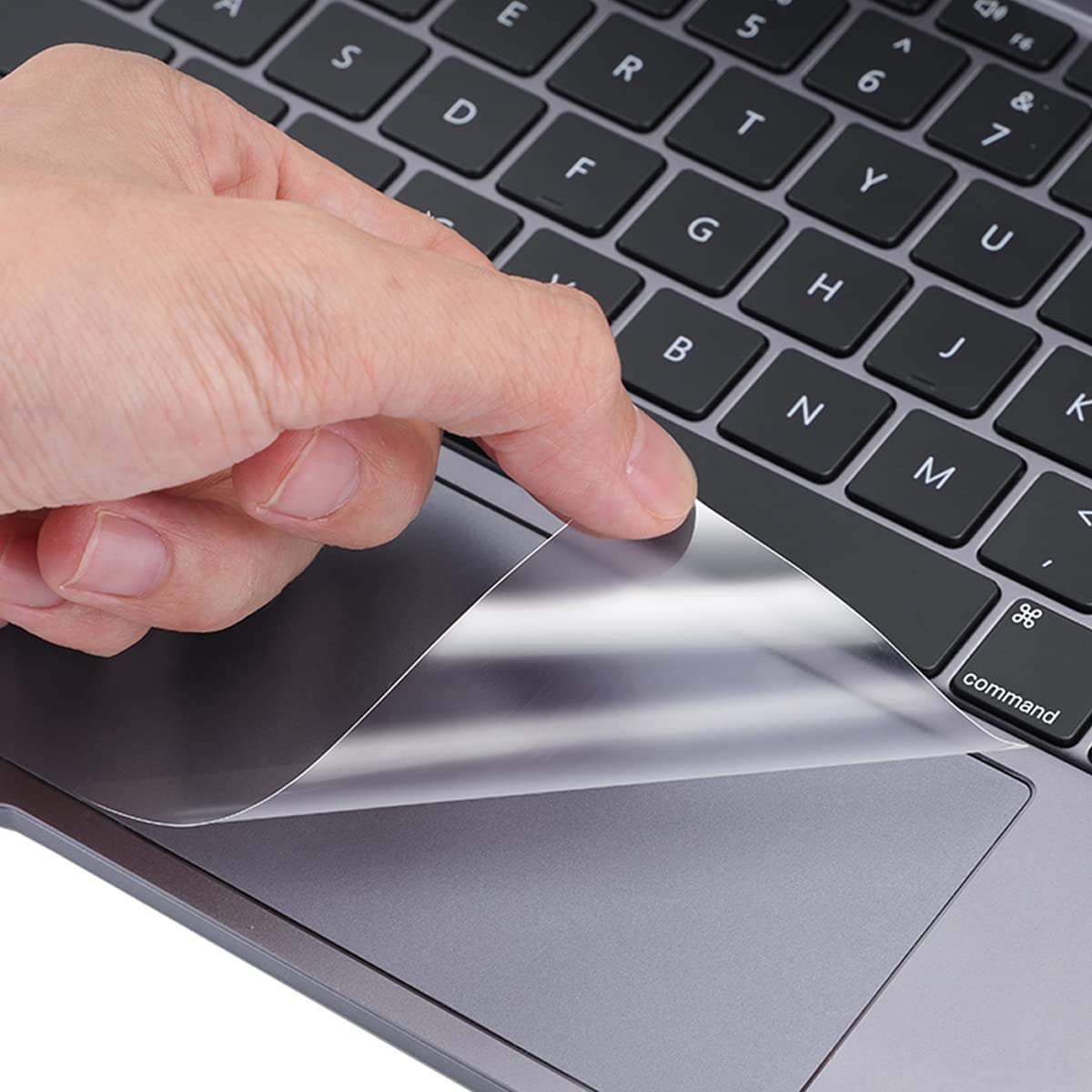Introduction
Trackpads have become an integral part of modern day computing, revolutionizing the way we interact with our devices. Gone are the days when we solely relied on the mouse for navigation. The trackpad, with its sleek design and intuitive functionality, offers a more efficient and seamless user experience.
So, what exactly is a trackpad? A trackpad is a touch-sensitive surface that allows you to control and navigate your device using gestures and movements of your fingertips. Originally introduced by Apple back in 1994, trackpads have now become a staple feature in laptops, tablets, and even some desktop keyboards.
Using a trackpad brings a multitude of benefits. Firstly, it allows for precise and fluid cursor movement, eliminating the need for a separate mouse. This is especially advantageous when you are on the go or working in tight spaces, where carrying a bulky mouse is impractical.
Another advantage is the efficient use of space. Unlike a mouse that requires physical movement on a surface, a trackpad requires only finger movements, saving valuable desk space. Additionally, trackpads usually come with built-in multi-touch capabilities, enabling a wide range of gestures and shortcuts for enhanced productivity.
In this article, we will explore the various aspects of using a trackpad effectively. We will delve into basic navigation techniques, common gestures, and shortcuts to boost your workflow, as well as troubleshooting tips for any issues you may encounter. By the end of this article, you will be equipped with the knowledge to unlock the full potential of your device’s trackpad.
What is a Trackpad?
A trackpad, also known as a touchpad, is a touch-sensitive input device that allows users to control and navigate their devices using gestures and movements of their fingers. It is commonly found on laptops, tablets, and even some desktop keyboards.
The trackpad consists of a flat and smooth surface that detects the movements and gestures made by the user’s fingers. It is usually made of materials like glass or plastic and utilizes capacitive touch technology to sense the finger’s position and movements.
Unlike a traditional mouse that requires physical movement on a surface, a trackpad uses touch sensitivity to replicate the actions of a mouse. This eliminates the need for a separate pointing device and allows for a more compact and streamlined design.
Trackpads typically support single-finger and multi-finger gestures, which can be customized based on the user’s preferences and operating system settings. These gestures can include tapping, scrolling, swiping, pinching, and rotating, among others.
One of the advantages of a trackpad is its versatility. With a trackpad, users can control the cursor, perform actions, and navigate through content by simply using various finger gestures. This makes it an ideal input device for tasks such as web browsing, document editing, image manipulation, and more.
Trackpads also offer convenience and mobility. They are built directly into the device, eliminating the need to carry an additional external mouse. This is particularly useful for users who are frequently on the move or working in limited spaces.
Overall, a trackpad provides a user-friendly and efficient way to interact with a device. It offers precise cursor control, supports multiple gestures and shortcuts, and frees up desk space. Whether you are a casual user or a professional, mastering the trackpad can greatly enhance your productivity and overall computing experience.
Benefits of Using a Trackpad
Using a trackpad as your primary input device offers a range of benefits that can enhance your computing experience. Here are some key advantages of using a trackpad:
- Precision and Fluid Cursor Control: Trackpads allow for precise and smooth control over the cursor. With the ability to adjust the sensitivity settings, you can customize it to your preferred level of accuracy.
- Gesture Support: Trackpads offer support for a wide range of gestures, allowing you to perform various actions with simple finger movements. These gestures can include three-finger swipes for app switching, pinch-to-zoom for scaling content, and two-finger scrolling for effortless navigation.
- Ergonomic Design: Trackpads are built into laptops and other devices, eliminating the need for an external mouse. This promotes a more ergonomic workspace by allowing your hands to stay in a comfortable and natural position while working.
- Convenience and Portability: Trackpads are lightweight and do not require extra desk space. This makes them ideal for users on the go, as they can easily slip their laptop or tablet into a bag without worrying about carrying a separate mouse.
- Multi-Touch Functionality: Most trackpads support multi-touch gestures, enabling you to perform complex actions with multiple fingers simultaneously. This can include rotating images, switching between virtual desktops, or even quickly accessing app-specific functions.
- No External Surface Required: Unlike a mouse, a trackpad does not need a solid surface to function. You can use it comfortably even when you don’t have access to a table or flat surface, such as when sitting on a couch or bed.
These benefits of using a trackpad make it a versatile and efficient input device. Whether you are a student, professional, or casual user, incorporating a trackpad into your computing setup can significantly improve your productivity, comfort, and overall user experience.
Getting Started with the Trackpad
If you’re new to using a trackpad, it’s important to familiarize yourself with its basic functionality to get the most out of it. Here’s a step-by-step guide to help you get started:
- Enable the Trackpad: Ensure that the trackpad is enabled on your device. Most laptops have a dedicated button or function key to enable or disable the trackpad. If you’re using a desktop keyboard with a built-in trackpad, it should be automatically enabled.
- Position your fingers: Rest your fingers lightly on the trackpad surface. Avoid applying too much pressure or dragging your fingers heavily, as this can affect the accuracy of your movements.
- Single-finger movement: Move your finger across the trackpad surface to control the cursor on the screen. Experiment with the speed and sensitivity settings to find a comfortable level of control.
- Left-click: To perform a left-click, simply tap the trackpad surface with one finger. This action is equivalent to clicking the left button of a mouse.
- Right-click: In most trackpads, you can perform a right-click by tapping the trackpad surface with two fingers simultaneously. This action is equivalent to clicking the right button of a mouse.
- Scrolling: To scroll through documents and webpages, use two fingers placed on the trackpad surface. Move your fingers up or down to scroll in the respective direction.
- Zooming: Pinch two fingers together on the trackpad surface to zoom out, and spread them apart to zoom in. This gesture allows you to quickly adjust the zoom level of images, documents, and web content.
- Swipe gestures: Experiment with different swipe gestures, such as swiping left or right with three fingers to switch between apps or swiping up with three fingers to reveal the app switcher or the desktop.
Remember, practice is key to mastering the trackpad. Spend some time exploring its functionality, experimenting with different gestures, and customizing the settings to suit your preferences. With a bit of practice, you’ll soon become proficient in navigating and controlling your device using the trackpad.
Navigating with the Trackpad
One of the primary uses of a trackpad is navigation. It allows you to move around your device and interact with different elements on the screen. Here are some tips and techniques to help you navigate efficiently using the trackpad:
- Cursor Movement: Simply move your finger across the trackpad surface to control the movement of the cursor on the screen. Practice controlling the cursor smoothly and precisely, adjusting the sensitivity settings if needed.
- Clicking: To perform a left-click, gently tap the trackpad surface with one finger. For a right-click, use two fingers to tap simultaneously. You can also enable tap-to-click feature in the settings to perform clicks without physically pressing the trackpad.
- Scrolling: Using two fingers, swipe up or down on the trackpad to scroll through documents, webpages, and other content. Adjust the scrolling speed in the trackpad settings to suit your preference.
- Natural Scrolling: Most trackpads offer the option of natural scrolling, where content moves in the opposite direction of your finger movement. This mimics the motion of touchscreen devices and can be enabled or disabled in the trackpad settings.
- Page Navigation: To navigate between pages in a web browser or document viewer, use two fingers to swipe left or right on the trackpad. This gesture is equivalent to clicking the back or forward button in the browser.
- Switching between Apps: On some trackpads, you can use a three-finger swipe gesture to quickly switch between open applications. Swipe left or right with three fingers to move between different app windows.
- Desktop Expose: If your operating system supports it, you can use a three-finger swipe up gesture to reveal the desktop or the app switcher. This allows you to quickly access your desktop files or navigate through open applications.
These navigation techniques will help you efficiently move around your device and interact with various elements on the screen. Experiment with different gestures, customize your trackpad settings to suit your needs, and practice regularly to become a proficient trackpad navigator.
Performing Basic Gestures on the Trackpad
Trackpads offer a wide range of gestures that can greatly enhance your productivity and efficiency. Understanding and mastering these basic gestures will enable you to interact with your device more intuitively. Here are some essential gestures to get you started:
- Tap to Click: With tap to click enabled, you can perform a left-click by quickly tapping the trackpad surface with one finger. This eliminates the need to physically press down on the trackpad for every click, resulting in faster and more seamless interactions.
- Two-Finger Scroll: Place two fingers on the trackpad surface and swipe up or down to scroll through documents, webpages, and other content. This gesture provides a smooth and effortless way to navigate through lengthy content.
- Pinch-to-Zoom: Use two fingers and pinch them together or spread them apart to zoom in and out on content. This gesture is particularly useful when viewing images, documents, or websites, allowing you to quickly adjust the zoom level to your preference.
- Rotate: On some trackpads, you can use two fingers to rotate images or other objects. Simply place two fingers on the trackpad and rotate them in a circular motion. This gesture is commonly used in image editing applications.
- Three-Finger Swipe: Swipe left or right with three fingers to switch between open applications or switch between different virtual desktops. This gesture provides a convenient way to navigate and switch between tasks without using keyboard shortcuts.
- Three-Finger Tap: A three-finger tap gesture can be used to bring up a context menu or perform specific actions depending on the application or operating system settings. This gesture is similar to a right-click but can have customizable functions.
- Smart Zoom: On some trackpads, you can double-tap with two fingers to zoom in and out on text, images, and other content. This gesture is especially useful when reading small text or examining details in an image.
These basic gestures provide a foundation for navigating and interacting with your device using the trackpad. Mastering these gestures will greatly improve your efficiency and make your computing experience more fluid and intuitive.
Advanced Gestures and Shortcuts for Improved Efficiency
Once you have mastered the basic gestures on your trackpad, you can take your productivity to the next level by learning some advanced gestures and shortcuts. These advanced techniques allow you to perform tasks more efficiently and navigate through your device seamlessly. Here are a few noteworthy ones:
- Four-Finger Swipe: On some trackpads, you can use a four-finger swipe gesture to switch between different virtual desktops or workspaces. This feature is particularly useful for users who need to organize and manage multiple tasks or projects simultaneously.
- Exposé: If your operating system supports it, enable the exposé feature, which allows you to quickly view all open windows or applications at once. Use a four-finger swipe gesture downwards to activate exposé, and then select the window you want to switch to.
- App Exposé: Similar to exposé, app exposé displays all the open windows of a specific application. Place three fingers on the trackpad and swipe downwards to activate app exposé. This is particularly handy when you have multiple documents or windows open in a single application.
- Force Click: Force click is a pressure-sensitive feature available on some trackpads. Apply a bit more pressure while clicking to access additional options or previews, depending on the context. This can be useful for previewing files, looking up word definitions, or accessing contextual menus.
- Swipe between Full-Screen Apps: Use a three-finger swipe gesture left or right to switch between full-screen applications. This gesture allows you to navigate between different apps without exiting full-screen mode, saving you time and providing a seamless multitasking experience.
- Custom Gestures: Some trackpad software or drivers allow you to create custom gestures and assign specific actions to them. Take advantage of this feature to create shortcuts for frequently used commands, applications, or system functions.
- Keyboard Shortcuts: While not specific to the trackpad, using keyboard shortcuts in conjunction with trackpad gestures can further enhance your productivity. Explore the comprehensive list of keyboard shortcuts for your operating system and applications to perform tasks quickly and efficiently.
By mastering these advanced gestures and shortcuts, you can streamline your workflow, navigate between tasks effortlessly, and accomplish your work more efficiently. Experiment with these techniques and customize them to suit your preferences and working style.
Adjusting Trackpad Settings for Personal Preference
The trackpad settings on your device offer a level of customization that allows you to tailor the trackpad experience to your personal liking. By adjusting these settings, you can optimize the sensitivity, speed, and functionality of your trackpad. Here are some trackpad settings you can customize:
- Cursor Speed: Adjusting the cursor speed determines how fast the cursor moves in response to your finger movements. If you find the cursor moving too slowly or too quickly, you can tweak this setting to your preferred level of responsiveness.
- Scrolling Direction: Most trackpads offer the option to reverse the scrolling direction, enabling natural scrolling where content moves in the same direction as your finger movement. However, if you prefer the traditional scrolling direction, you can disable the natural scrolling feature.
- Tap to Click: You can enable or disable the tap to click feature based on your preference. If you find accidental clicks occurring too frequently, disabling tap to click may prevent unintended actions.
- Gestures: Customize the gestures on your trackpad to suit your needs. Some trackpad settings allow you to enable or disable specific gestures, adjust their sensitivity, or assign custom actions to gestures.
- Tap Sensitivity: Adjust the sensitivity of the trackpad surface to determine how light or firm your touch needs to be for a gesture or click to register. Finding the right tap sensitivity can improve accuracy and reduce unintended actions.
- Force Click: If your trackpad supports force click, you can adjust the pressure required to initiate a force click. This allows you to find the right balance between accidental force clicks and intentional usage.
- Secondary Click: Customize the secondary click functionality, also known as right-click, by choosing between options like tapping with two fingers, clicking in the bottom-right corner of the trackpad, or using a dedicated button on certain trackpads.
- Trackpad Acceleration: Trackpad acceleration determines how the cursor’s speed changes based on the speed of your finger movement. Adjusting this setting can help achieve a more linear cursor movement or a faster acceleration based on your preference.
By adjusting these trackpad settings to your personal preference, you can fine-tune your trackpad experience, making it more comfortable and intuitive. Explore these settings in your device’s system preferences or settings app to discover the options available for customization.
Troubleshooting Common Trackpad Issues
While trackpads are generally reliable and efficient, you may encounter occasional issues that affect their functionality. Here are some common trackpad issues and troubleshooting steps to help resolve them:
- Unresponsive Trackpad: If your trackpad is not responding, first ensure that it is enabled in the device’s settings. If it is enabled and still unresponsive, try restarting your device. If the problem persists, check for any software updates or consider reinstalling the trackpad drivers.
- Cursor Drifting or Jumping: If the cursor moves erratically or jumps around the screen, make sure the trackpad surface is clean and free from any dirt or debris. Also, try adjusting the trackpad sensitivity settings to find a level that minimizes the issue.
- Inaccurate Gestures: If gestures are not functioning as intended, check the trackpad settings to ensure that the gestures are enabled and configured correctly. In some cases, a restart or software update may be necessary to resolve the issue.
- Accidental Clicks: If you find yourself accidentally triggering clicks while using the trackpad, consider adjusting the tap sensitivity setting to require a firmer touch. Alternatively, you can disable tap to click and rely on physical clicks instead.
- Lag or Delay: If there is a noticeable lag or delay between your finger movements and the cursor’s response, check for any background processes or applications that may be consuming excessive system resources. Closing unnecessary programs or restarting your device can often alleviate lag issues.
- Trackpad Heating: Excessive heating of the trackpad surface can sometimes occur, particularly during gaming or intensive tasks. Avoid extended periods of intense trackpad usage and give it time to cool down if it becomes too hot. If the heating issue persists, consider contacting technical support for further assistance.
- Physical Damage: If your trackpad has suffered physical damage, such as cracks or water exposure, it may require professional repair or replacement. In such cases, consult with an authorized service center or contact the manufacturer for assistance.
If you continue to experience trackpad issues despite troubleshooting, it may be necessary to seek professional help or contact the manufacturer’s support team. They can provide specific guidance based on your device’s model and specifications.
Remember to periodically clean your trackpad surface to prevent dirt or residue buildup, as this can affect its performance. Following proper maintenance and troubleshooting steps will help ensure a smooth and reliable trackpad experience.
Conclusion
Using a trackpad offers a convenient and efficient way to navigate your device and interact with its features. Whether you are a student, professional, or casual user, mastering the trackpad’s functionality can greatly enhance your productivity and overall computing experience.
In this article, we have explored the various aspects of using a trackpad effectively. We started by introducing what a trackpad is and the benefits it offers, such as precise cursor control, gesture support, and ergonomic design. We then provided a step-by-step guide on getting started with the trackpad, covering basic navigation techniques and essential gestures.
As you become more comfortable with the trackpad, you can explore advanced gestures and shortcuts to further improve efficiency. These include four-finger swipes, app exposé, force click, and custom gestures, among others. Additionally, we discussed the importance of adjusting trackpad settings to suit your personal preference, such as cursor speed, scrolling direction, and tap sensitivity.
Lastly, we addressed common trackpad issues and provided troubleshooting tips to help overcome them. From unresponsive trackpads to inaccurate gestures, these troubleshooting steps can help you resolve common issues and ensure a more reliable trackpad experience.
Remember, practice and experimentation will help you become proficient in using the trackpad. With time, you will develop your own set of preferred settings and gestures that align with your unique workflow.
So, embrace the trackpad as a powerful tool and explore its capabilities to unlock the full potential of your device. Whether you’re working on a complex project, browsing the web, or performing everyday tasks, the trackpad will be there to enhance your control and productivity.







